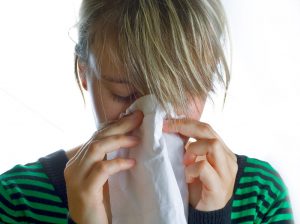 As the cold weather approaches, so does the dreaded flu season. There are good medical methods you can use to prepare for flu season, as well as simple precautions like getting into the habit of regularly washing your hands. But you may not be aware of the ways you can improve your home’s indoor air quality to make it easier to get through flu season without getting sick.
As the cold weather approaches, so does the dreaded flu season. There are good medical methods you can use to prepare for flu season, as well as simple precautions like getting into the habit of regularly washing your hands. But you may not be aware of the ways you can improve your home’s indoor air quality to make it easier to get through flu season without getting sick.
Yes, indoor air quality can play a big part in whether you and other people in your household catch the flu, the cold, or other illnesses during the fall and winter. Once germs and viruses get into your house, they’ll start to circulate through the ventilation system, making is easier for them to spread from person to person. Fresh air can help—but you often don’t want to open your home to outdoor air when it’s cold.
Fortunately, we offer indoor air quality solutions that can help you enjoy a much healthier home this coming flu season.


 It’s been raining this week and last week in Fresno, CA. This rainfall is very welcome, since we’ve been going through a drought and rain brings relief for farmers. But there’s a downside—and we don’t mean having an outdoor touch football game being rained out. Spring rains cause the pollen count to rise, and this can be terrible for allergies. Watery eyes, runny nose, sneezing, and all types of allergy irritations occur because there’s too much pollen drifting in the air.
It’s been raining this week and last week in Fresno, CA. This rainfall is very welcome, since we’ve been going through a drought and rain brings relief for farmers. But there’s a downside—and we don’t mean having an outdoor touch football game being rained out. Spring rains cause the pollen count to rise, and this can be terrible for allergies. Watery eyes, runny nose, sneezing, and all types of allergy irritations occur because there’s too much pollen drifting in the air. Now that it’s May, we’re deep into the allergy season. This time of year can be miserable for people who suffer from pollen and grass allergies, leading to the dreaded “hay fever.” Even for people who don’t have specific allergies like these, the high pollen count in the air can add an extra level of irritation to the day from an itchy nose to mild headaches.
Now that it’s May, we’re deep into the allergy season. This time of year can be miserable for people who suffer from pollen and grass allergies, leading to the dreaded “hay fever.” Even for people who don’t have specific allergies like these, the high pollen count in the air can add an extra level of irritation to the day from an itchy nose to mild headaches. The early spring brings with it warmer weather. But it also brings with it allergy season. Bad allergic reactions to pollen, mold, and other pollutants floating in the air can turn a pleasant spring into an extremely unpleasant one—even for people who don’t normally suffer from allergic reactions.
The early spring brings with it warmer weather. But it also brings with it allergy season. Bad allergic reactions to pollen, mold, and other pollutants floating in the air can turn a pleasant spring into an extremely unpleasant one—even for people who don’t normally suffer from allergic reactions.